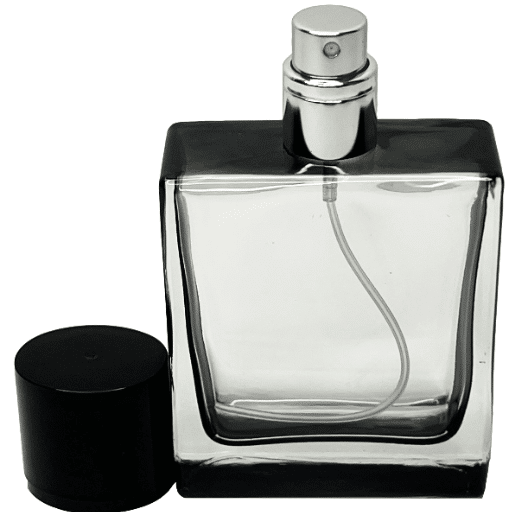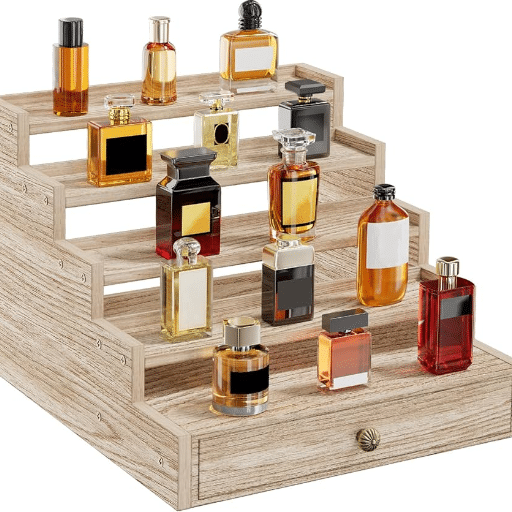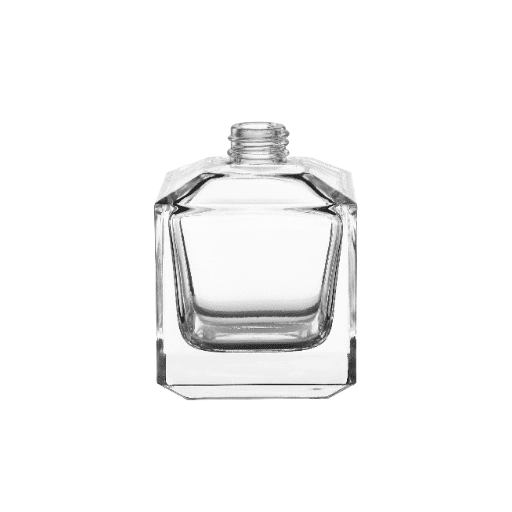When it comes to selecting the right cologne, presentation plays a significant role alongside fragrance. Black cologne bottles have emerged as a symbol of elegance, sophistication, and timeless appeal, making them a preferred choice for many. This guide is designed to help you make an informed decision when choosing the ideal black cologne bottle that aligns with your personal style, practical needs, and visual preferences.
Throughout this article, we will explore the essential factors to consider, including the materials and designs of black bottles, their functionality and durability, and how they influence the perception of a fragrance. Additionally, we will highlight how these bottles reflect a sense of luxury and identity while providing tips for selecting products that offer both aesthetics and value. By the end of this guide, you will have all the information needed to confidently choose the perfect black cologne bottle that complements your unique taste.
What Makes a Perfume Bottle Stand Out?
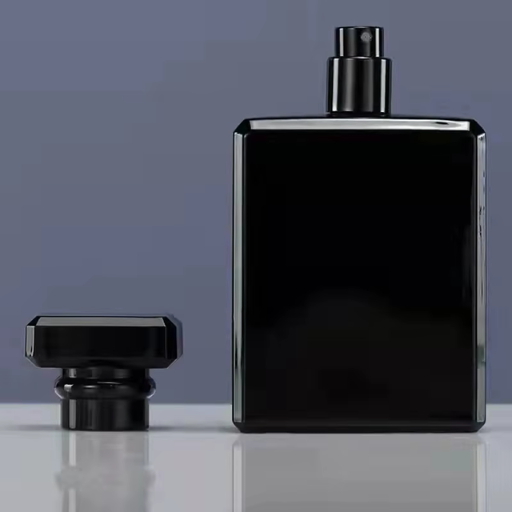
A perfume bottle stands out through a combination of design, functionality, and the emotions it evokes. The use of premium materials, intricate detailing, and innovative shapes can create a bottle that captures attention and conveys quality. Functionality, such as an ergonomic shape and a durable, well-sealing cap, ensures practicality and longevity. Additionally, the overall aesthetic of the bottle, including color choices and finishes, can communicate the essence of the fragrance itself, making it appealing to the consumer. A standout bottle blends artistry and utility while aligning with the brand’s identity and target audience.
Understanding the Importance of Design in Product Development
Design serves as a vital bridge between functionality and consumer appeal, playing a central role in shaping user experience and brand perception. A well-executed design considers factors such as usability, aesthetics, and the target market’s preferences. According to leading resources, practicality is paramount; a product’s design must ensure ergonomic handling, durability, and effective functionality. Simultaneously, visual and tactile elements—color, texture, and shape—must evoke an emotional connection, reinforcing brand identity and storytelling.
Furthermore, design significantly influences purchasing decisions. Studies emphasize that innovative and thoughtful design enhances market differentiation, driving both initial interest and long-term brand loyalty. By combining utility with an engaging visual presence, designers ensure products not only meet practical needs but also resonate with the values and aspirations of their intended audience.
The Role of Material in Perfume Bottles
From my experience and research, the material used in perfume bottles plays a critical role in both functionality and aesthetics. Glass is often the preferred choice because of its inert nature, ensuring the fragrance remains unaltered by external contaminants. Additionally, transparent or tinted glass can be manipulated to enhance visual appeal and convey luxury. Metals, such as aluminum or gold components, are sometimes incorporated for a premium feel while providing durability. Plastics are more lightweight and cost-effective, often used for travel-friendly or refillable options. Ultimately, choosing the right material is a balance between preserving the perfume’s integrity, elevating brand identity, and meeting sustainability expectations.
How Matte Black Enhances Aesthetic Appeal
Matte black enhances aesthetic appeal by exuding a sophisticated and modern style that aligns with premium and high-end product branding. Its non-reflective surface creates a sleek, understated look that highlights minimalist design principles, making it particularly appealing in luxury markets.
From a technical perspective, matte finishes are achieved through texturing or coating processes, such as micro-etching or powder coating, which reduce light reflection. The surface roughness typically falls within the range of 0.5 to 1.5 micrometers (Ra) to achieve the desired matte effect without compromising material strength. Additionally, matte black coatings often incorporate durable finishes like polyurethane or PVD (Physical Vapor Deposition) to resist abrasions and maintain color stability over time. These parameters ensure the material’s functional longevity while reinforcing its high-quality, luxurious appearance.
How to Choose the Right Fragrance for You?
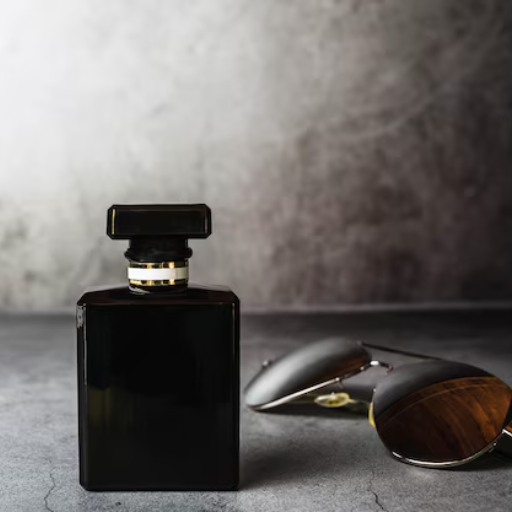
Choosing the right fragrance involves understanding personal preferences, body chemistry, and the technical properties of the fragrance itself. Here are some concise steps to guide you:
1. Identify Fragrance Families
Fragrances are broadly categorized into families, such as floral, woody, citrus, oriental, and fresh. Each family has unique characteristics:
-
-
- Floral scents (e.g., rose, jasmine) are soft and romantic.
- Woody scents (e.g., sandalwood, cedar) exude warmth and earthiness.
- Citrus scents (e.g., lemon, bergamot) feel vibrant and energetic.
- Oriental scents (e.g., amber, vanilla) are rich and exotic.
- Fresh scents (e.g., aquatic, green notes) are clean and light.
-
2. Consider Concentration Levels
Fragrance longevity and strength are influenced by oil concentration in the product. Technical parameters for common concentrations include:
-
-
- Parfum (Extrait de Parfum): 20-30% fragrance oil, lasting 8-12 hours.
- Eau de Parfum (EDP): 15-20% fragrance oil, lasting 6-8 hours.
- Eau de Toilette (EDT): 5-15% fragrance oil, lasting 4-6 hours.
- Eau de Cologne: 2-4% fragrance oil, lasting approximately 2-3 hours.
-
3. Test for Body Chemistry Compatibility
Body temperature, skin pH, and natural scent can influence how a fragrance develops and lingers. Spray a small amount on pulse points (wrist, neck) and wait 15-20 minutes to assess the fragrance’s evolution through top, middle, and base notes.
4. Assess Seasonal and Situational Suitability
-
-
- Seasonal Selection: Lighter fragrances like citrus or fresh scents are ideal for warm weather, while richer scents like woody or oriental are better suited for colder seasons.
- Occasion: Subtle scents are great for formal or work settings, while bolder ones work well for evening or special events.
-
5. Understand Ingredients and Allergen Safety
Check for high-quality, well-sourced ingredients and ensure that the fragrance complies with regulatory standards to avoid allergens like synthetic musks or phthalates where necessary. Opt for IFRA-compliant (International Fragrance Association) products to ensure safety and sustainability.
By balancing technical parameters with personal preferences, you can select a fragrance that enhances your individuality and suits your lifestyle seamlessly.
Identifying Your Signature Scent
Identifying my signature scent involves understanding my personal preferences and how certain fragrances resonate with my personality and daily life. I approach this by exploring different fragrance families—floral, woody, oriental, or fresh—and paying attention to how each reacts with my skin’s unique chemistry. I make it a point to test fragrances over time, considering how top, heart, and base notes develop throughout the day. Additionally, I focus on selecting IFRA-compliant products to ensure both safety and sustainability. By aligning these factors with my lifestyle, I can confidently select a scent that feels authentic and timeless.
Exploring Woody and Intense Aromas
I find woody and intense aromas to be both grounding and sophisticated. These fragrances often feature notes such as sandalwood, cedarwood, patchouli, and vetiver, which provide a rich and earthy base. To ensure I choose the right scent, I examine key technical parameters such as the concentration of essential oils (e.g., Eau de Parfum at 15–20% for long-lasting intensity) and the fragrance’s sillage and longevity. Additionally, I look for balanced compositions where woody accords are complemented by warmer spice or aromatic elements, creating depth without overwhelming. By testing these scents in varying conditions and monitoring their dry-down phase, I can confidently gauge their performance and how they align with my preferences.
Tips for Selecting a Long-lasting Perfume
- Check the Concentration
Perfume longevity heavily depends on its concentration of essential oils. Opt for higher concentrations like Eau de Parfum (15–20%) or Extrait de Parfum (20–30%), as these contain a greater proportion of oils, resulting in a more potent and enduring fragrance.
- Evaluate Fragrance Notes
Look for perfumes with base notes such as amber, sandalwood, patchouli, or musk, which are known to linger longer on the skin. Woody, spicy, and resinous scents have better staying power compared to lighter floral or citrus notes.
- Test Skin Compatibility
The performance of a perfume can vary depending on individual skin chemistry. Test the fragrance on your skin, noting how it evolves through the top, heart, and base note phases. This will help ensure the scent lasts and suits your personal chemistry.
- Layer the Fragrance
Amplify longevity by using complementary products like scented lotions, body oils, or shower gels from the same fragrance line. Layering helps lock in the scent and ensures it remains detectable throughout the day.
- Apply Strategically
Apply perfume to pulse points such as the wrists, neck, and behind the ears, where body warmth enhances diffusion. Avoid rubbing the fragrance, as this can break down the scent molecules, reducing its lifespan.
By combining these factors, you can confidently select a perfume that offers long-lasting performance while aligning with your personal preferences.
Why Opt for a Black Glass Perfume Bottle?
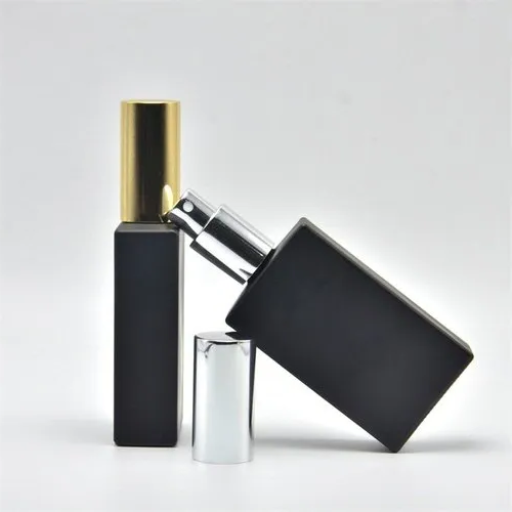
Black glass perfume bottles offer distinct advantages in preserving the quality and longevity of fragrances. The dark glass effectively blocks harmful UV light, which can degrade perfume compounds and alter their scent profile over time. Additionally, black glass provides an airtight and impermeable barrier, minimizing exposure to air and moisture that could compromise the fragrance’s integrity. This choice is both functional and aesthetically appealing, ensuring your perfume remains protected and potent while offering a sleek, luxurious presentation.
The Benefits of Black Glass in Preserving Fragrance
From my research, black glass is an optimal choice for preserving fragrances due to its ability to block harmful light, particularly UV rays, which can degrade essential perfume compounds. Additionally, it creates a highly effective barrier against air and moisture, preventing oxidation and evaporation that could alter the scent’s integrity. This combination of protective properties and durability ensures fragrances remain stable, extending their shelf life. Beyond functionality, the sleek design of black glass also enhances the visual appeal of the fragrance, marrying practicality with aesthetics.
How Elegant Black Bottles Add Sophistication
Elegant black bottles contribute significantly to the sophistication of a fragrance product through both functional and aesthetic elements. On the functional side, black glass provides exceptional protection against ultraviolet (UV) light, which can degrade sensitive fragrance compounds. Technical parameters support this, as black glass can block up to 99% of UV rays, ensuring the quality and longevity of the product.
From an aesthetic perspective, black bottles convey a sense of luxury and exclusivity. The sleek, minimalist appearance aligns with premium design principles, appealing to discerning customers. Furthermore, their weight and finish often adhere to precise manufacturing tolerances, typically within ±0.2 mm, ensuring consistency and a high-quality tactile experience. This combination of robust technical performance and refined design makes elegant black packaging an ideal choice for sophisticated fragrance presentations.
What to Consider in Cologne for Men?
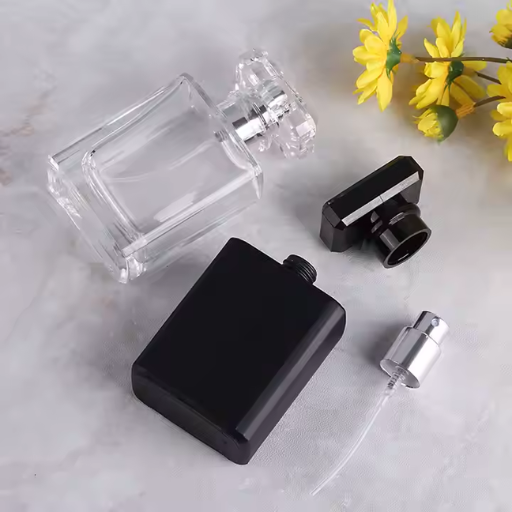
When selecting cologne for men, several factors should be carefully evaluated to ensure the best choice for both personality and practical use. Here are the key considerations:
- Fragrance Notes
Colognes are typically composed of three layers of notes—top, middle (heart), and base. The top notes are the initial scents perceived after application, usually lasting 15-30 minutes (e.g., citrus, herbal). The heart notes develop next, lasting 2-4 hours and often include floral, spice, or green aromas. Finally, the base notes provide the foundation of the scent, lasting 4-8 hours, with common components like woods, musk, or amber. To ensure a long-lasting and balanced fragrance, opt for colognes with high-quality natural or synthetically refined ingredients.
- Concentration Level
Cologne concentration determines the intensity and longevity of the fragrance. Eau de Cologne typically contains 2-4% fragrance oil in alcohol and water, offering a light and refreshing scent that lasts 2-3 hours. For longer-lasting options, consider Eau de Toilette (5-15% concentration, lasting 4-6 hours) or Eau de Parfum (15-20% concentration, lasting 6-8 hours).
- Skin Chemistry and Application
A cologne’s interaction with individual skin chemistry may alter its final scent profile. Testing cologne directly on your skin is critical before purchase. For optimal application, spray on pulse points such as the wrists, neck, and collarbone, where the skin’s warmth enhances fragrance diffusion.
- Occasion and Seasonality
Heavier scents with notes of amber, leather, and oud are better suited for colder months or evening wear. Conversely, lighter fragrances with citrus, green, or marine notes work best for warmer weather or daytime settings. Choose a fragrance that aligns with intended use and environment for maximum compatibility.
- Packaging and Storage
High-quality packaging not only protects the fragrance but also reflects the product’s premium nature. Prefer glass bottles with tight seals to preserve the cologne’s stability. Store fragrances in a cool, dry place away from direct sunlight, as heat and light can degrade fragrance oils over time. The ideal storage temperature is between 55°F and 72°F (13°C to 22°C).
Carefully considering these aspects while evaluating colognes will help ensure a selection that aligns with personal style, maximizes performance, and complements the user’s lifestyle effectively.
The Popularity of Polo Black Cologne for Men
From my research, Polo Black Cologne for Men owes its popularity to its sophisticated and versatile fragrance profile, combining notes of mango, patchouli, and sandalwood for a bold yet elegant scent. It is highly favored for evening wear, thanks to its unique balance of fresh and woody tones that exude confidence and charm. Many users commend its longevity and moderate projection, making it a reliable choice for special occasions or professional settings. Overall, its consistent performance and modern appeal have solidified its status as a top choice among men’s colognes.
Choosing Between Eau de Toilette and Eau de Parfum
Choosing between Eau de Toilette (EDT) and Eau de Parfum (EDP) depends largely on personal preference and the intended use. Eau de Toilette typically contains a fragrance concentration of 5–15% and is lighter and fresher, making it ideal for daytime use or warm climates. It generally lasts around 4–6 hours on the skin. On the other hand, Eau de Parfum is more concentrated, with 15–20% fragrance concentration, offering a richer and more intense scent. This makes it better suited for evening wear, cooler weather, or situations requiring longer-lasting projection, as it can last 6–8 hours or more.
When deciding, consider both the fragrance’s longevity and its sillage (the trail of scent it leaves). If you prefer a subtle, less overpowering scent for casual settings, an EDT might be the better choice. For occasions where you want to make a stronger impression, an EDP provides depth and endurance.
The Impact of Packaging on Brand Perception
From my research, it’s clear that packaging plays a critical role in shaping how a brand is perceived by its audience. Firstly, packaging design creates the initial point of interaction with customers, making it essential for it to reflect the brand’s identity and values. A well-designed package conveys professionalism, builds trust, and can immediately communicate product quality. Modern consumers are also increasingly drawn to eco-friendly and sustainable packaging, with materials and design choices aligned with environmental values enhancing brand loyalty. Additionally, usability and functionality, such as resealable features or ergonomic designs, significantly enhance the customer experience, directly connecting satisfaction with brand perception.
Is a Refillable Perfume Bottle a Good Investment?
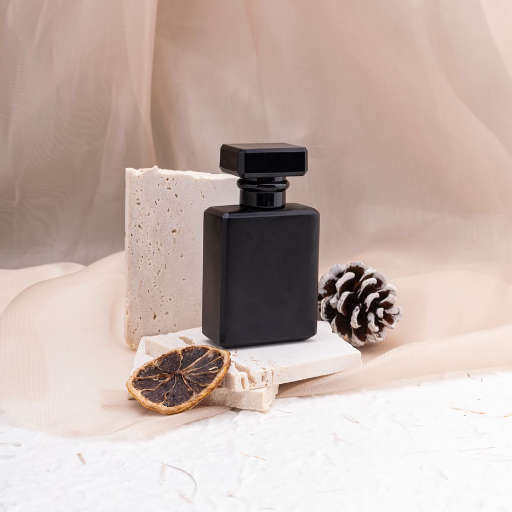
Yes, a refillable perfume bottle can be a good investment for several reasons. First, it offers significant cost savings over time by allowing users to purchase fragrance refills, which are often cheaper than buying entirely new bottles. Second, from an environmental perspective, it reduces waste by minimizing the need for single-use packaging, aligning with sustainable practices. Additionally, refillable bottles are highly convenient for frequent travelers, as they can be refilled with smaller quantities of perfume for portability. Overall, the practicality, cost-efficiency, and eco-friendliness of refillable perfume bottles make them a worthwhile consideration for perfume enthusiasts.
The Environmental Benefits of Refillable Bottles
Resource Conservation and Waste Reduction
Refillable bottles significantly contribute to resource conservation by reducing the demand for raw materials such as glass and plastic required for manufacturing single-use containers. For instance, reusing a refillable bottle over a year can eliminate the waste generated by approximately 10-20 single-use bottles, depending on the frequency of use and bottle capacity. This reduction directly decreases landfill contribution and mitigates pollution during the disposal process.
Carbon Footprint Minimization
The production and transport of single-use bottles involve substantial energy and fuel consumption, leading to high carbon emissions. Refillable bottles, however, require fewer production cycles and substantially lower logistical demands. Technically, producing one high-quality refillable bottle results in approximately 30-50% less CO2 emissions over its lifecycle compared to multiple single-use bottles.
Water and Energy Conservation
Manufacturing bottles involves considerable water and energy usage during the extraction, processing, and recycling stages. Refillable bottles, when sustainably designed, consume far less in recurrent production cycles, minimizing the strain on natural resources. For example, high-grade refillable glass bottles often have lifespans exceeding 5–10 years, during which time they eliminate the repetitive energy inputs associated with single-use alternatives.
Encouraging Sustainable Consumer Practices
Refillable bottles promote a shift toward circular economies by encouraging consumers to prioritize reuse over disposal. By adopting refill systems, businesses can also implement eco-efficient supply chains with lower material waste and reduced packaging needs. With refill stations readily accessible, consumer participation in sustainable consumption habits increases, supporting broader environmental goals.
By embracing refillable bottles, both individuals and industries actively contribute to environmental sustainability through measurable reductions in resource use, waste output, and energy consumption.
Cost Efficiency of Investing in Refillable Options
Investing in refillable options offers clear cost efficiencies over time. By reducing dependency on single-use packaging, both production and disposal costs are significantly lowered. Additionally, the ability to reuse durable containers results in long-term savings on material procurement and manufacturing. From a business perspective, focusing on refillable systems decreases waste management expenses and capitalizes on consumer preference for sustainable practices, further driving profitability.
How to Properly Use a Refillable Cap and Sprayer
Step-by-Step Guide to Properly Use a Refillable Cap and Sprayer
- Preparation and Cleaning
Ensure the refillable container, cap, and sprayer are thoroughly cleaned before initial use to remove any potential residue or contaminants. Rinse the components with warm water and mild soap, taking care to eliminate any substances that could clog the sprayer mechanism. Allow all parts to dry completely to prevent dilution of the product to be used.
- Refilling the Container
Select a compatible liquid for the container, as the type of product (such as cleaning solutions, oils, or cosmetics) must match the sprayer’s design. Unscrew the cap and pour the liquid carefully, using a funnel if necessary to avoid spills and overfilling. Fill the container only up to the recommended capacity to ensure proper functionality of the sprayer.
- Reassembling the Components
After refilling, ensure the sprayer and cap are securely attached. Double-check the threading on the container’s neck and the cap to ensure an airtight seal. Misalignment can lead to leakage or inefficient spraying.
- Testing and Usage
Before regular use, test the sprayer by pressing the trigger or pump to ensure the liquid is dispensed correctly. Adjust the nozzle if the sprayer is equipped with options for mist or stream spraying. If the sprayer fails to work correctly, inspect for blockages or loose parts.
- Maintenance and Storage
Periodically clean the sprayer and cap to prevent clogging or buildup of product residue. Store the refillable container in a cool, dry location, away from direct sunlight or exposure to extreme temperatures, which can degrade both the liquid and the materials of the container.
By adhering to these steps, users can optimize the lifespan and performance of their refillable cap and sprayer systems, ensuring cost-effectiveness and environmental sustainability.
Reference Sources
-
Packamor – Black Perfume Bottles / Black Cologne Bottles – Discusses customizable solutions for black fragrance bottles.
-
Infinity Jars – Choosing Cologne Bottles for Your Fragrance Line – Offers insights into selecting cologne bottles for fragrance lines.
-
SmashBrand – The Ultimate Guide To Perfume Packaging Design – Explains the essentials of creating competitive perfume packaging designs.
-
Shine Packagings – A Guide to Perfume Bottle Shapes – Covers various perfume bottle shapes and their significance.
-
Alpha Aromatics – Why Perfume Bottle Design Is As Important As Scent Design – Highlights the importance of bottle aesthetics in enhancing a fragrance’s value.
Frequently Asked Questions (FAQs)
Q: What are the benefits of choosing a black perfume bottle?
A: Black perfume bottles, like the Polo Black by Ralph Lauren, are often preferred for their sleek and sophisticated appearance. They typically protect the fragrance from light exposure, which can help maintain the scent’s integrity over time.
Q: How do I choose the right size for a black cologne bottle?
A: Consider your usage needs and travel habits. For frequent travelers, a travel size or mini perfume bottle, such as a 2 oz or 1.7 oz, is ideal. For regular use, a 3.4 oz bottle may be more economical.
Q: What is the difference between a cologne spray and a perfume bottle spray?
A: A cologne spray typically dispenses a lighter concentration of fragrance, ideal for casual wear. A perfume bottle spray generally contains a higher concentration of oils for a more intense scent experience.
Q: Are there any advantages of a silver pump on a black cologne bottle?
A: A silver pump not only adds a touch of elegance but also offers durability and ease of use when dispensing your favorite cologne. It ensures a consistent spray with each use.
Q: Can I refill my black cologne bottle?
A: Yes, many cologne bottles are designed to be refillable. Check if your bottle has a removable pump or spray mechanism to facilitate easy refilling without spills.
Q: How do I maintain the smell of my black cologne?
A: To maintain the smell, store your cologne in a cool, dark place away from direct sunlight and heat. Ensure the cap or spray is tightly closed to prevent evaporation.
Q: Is a small bottle of black cologne practical for daily use?
A: Small bottles, such as a 2 oz or travel size, are practical for those who prefer portability and convenience. They are easy to carry in a bag or pocket for quick touch-ups throughout the day.
Q: What should I consider when buying a black cologne bottle for travel?
A: Look for a sturdy, leak-proof design that complies with airline regulations, such as a mini perfume or travel size. A 1.7 oz or 2 oz bottle is typically acceptable for carry-on luggage.
Q: How can I tell if a black cologne bottle will suit my style?
A: Consider the overall design, such as the use of silver accents or a minimalist aesthetic, to see if it aligns with your personal style. Additionally, test the scent to ensure it matches your fragrance preferences.
Q: Why choose a black cologne bottle over other colors?
A: Black cologne bottles offer a timeless and versatile look that complements any collection. They tend to appeal to those who appreciate classic and understated elegance in their perfumery choices.

